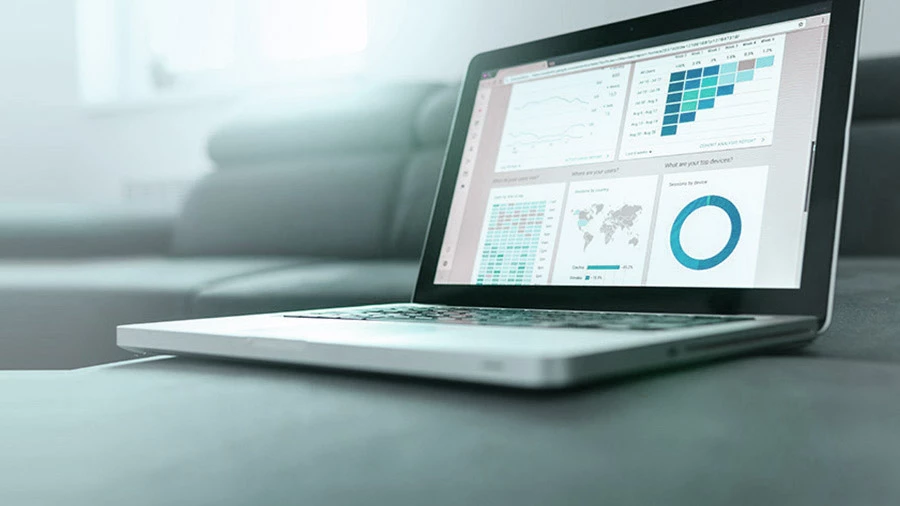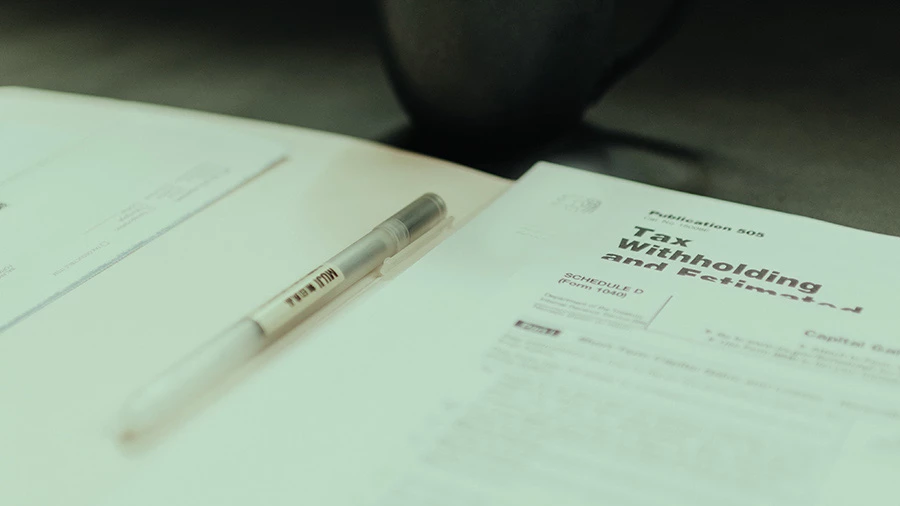Value-added tax (VAT) is one of the major indirect taxes in China. The fundamental legal framework for VAT consists of the Interim Regulation of VAT promulgated by the State Council and its Implementation Guidelines released jointly by the Ministry of Finance (MOF) and State Taxation Administration (STA).
VAT taxpayers and rates
VAT taxpayers are categorized into general taxpayers and small-scale taxpayers based on their annual taxable sales amount. Taxpayers with annual taxable sales exceeding the annual sales ceiling set for small-scale taxpayers, i.e., RMB 5 million, must apply for general taxpayer status. In the table below, we compare VAT general taxpayers with VAT small-scale taxpayers.
|
VAT General Taxpayer v/s Small-Scale Taxpayer |
||
|
|
VAT general taxpayer |
VAT small-scale taxpayer |
|
Taxable income |
> RMB 5 million |
≤ RMB 5 million |
|
Rate |
6% to 13% |
3% |
|
VAT payable |
OUTPUT VAT IN THE CURRENT PERIOD - INPUT VAT IN THE CURRENT PERIOD |
SALES x VAT LEVY RATE |
|
Pros |
|
|
|
Cons |
|
|
|
*The critical ratio here refers to a ratio of profit markup on cost under which the tax burden for the general taxpayer and small-scale taxpayer is the same. It varies based on the actual tax rates applied.
|
||
Calculating VAT payable
General taxpayers
The basic formula for calculating VAT payable is:
VAT PAYABLE = OUTPUT VAT IN THE CURRENT PERIOD - INPUT VAT IN THE CURRENT PERIOD
If the output tax for the current period is insufficient to offset the input tax of the current period, the difference can be carried forward to the next term for continued offset.
Qualified taxpayers are allowed to apply for uncredited VAT refunds in the current taxable period. The full refund of incremental VAT credit on a monthly basis is extended to micro and small firms in all industries as well as qualified enterprises in another twelve industries. Qualified enterprises will also enjoy a one-off refund of their remaining VAT credit in turn, following a timeline specified by the tax authorities.
Output VAT
Output VAT refers to the VAT amount the taxpayer must calculate and collect when selling goods or providing services:
OUTPUT VAT= SALES x VAT RATE
The VAT Interim Regulations define “sales” as the total amount of prices and other outlays received from the buyer, excluding output VAT. If the original price of the product(s) already includes VAT, the sales amount excluding VAT should be:
SALES= SALES INCLUDING OUTPUT VAT / (1 + VAT RATE)
Input VAT
Input VAT is the VAT amount paid by the taxpayer when purchasing goods or taxable services.
Certain types of input VAT are eligible for deduction against output VAT, for example, the VAT amount indicated on special VAT invoices obtained from sellers, special tax payment receipts of customs import VAT obtained from the customs office, etc.
Certain items cannot be credited against output VAT, including, but not limited to, taxable items under the simple tax computation method, non-VAT taxable items, VAT-exempt items, procurement of goods, processing/ repair/replacement services, intangible assets and immovables to be used for collective welfare or personal consumption, etc.
|
VAT Rates for General Taxpayers |
|
|
Taxable items |
Rate |
|
0 |
|
Sales and import of the following:
|
9% |
|
Sale and import of goods other than those listed above; processing, repairs, and replacement services |
13% |
|
Tangible property leasing services:
|
13% |
|
Transportation services:
|
9%* |
|
Postal services:
|
9%* |
|
Construction and real estate |
9% |
|
Basic telecom services |
9% |
|
Value-added telecom services |
6% |
|
Financial services:
|
6% |
|
Modern services:
|
6% |
|
Life services:
|
6% |
|
Sale of intangible assets:
|
6% |
|
*VAT rate for transfer of land use right is 9%. |
|
Small-scale taxpayers
For small-scale taxpayers, the formula for determining VAT payable is:
VAT = SALES x VAT LEVY RATE
SALES= SALES INCLUDING VAT / (1 + VAT LEVY RATE)
VAT payments
The time when the taxpayer engages in taxable behavior is when the tax obligation arises. For example:
- The VAT payment obligation arises for the sale of goods or the provision of taxable services on the date the sales amount is collected or the proof of sales amount is obtained;
- The VAT payment obligation for goods imported occurs on the date of Customs declaration for imports; and
- The VAT withholding obligation arises on the date the VAT payment obligation occurs.
When the VAT obligation arises, it is critical to determine when the "output VAT for the period" arises. It is illegal for businesses to intentionally delay or omit recording realized sales in order to delay or evade tax payments.
Due date for VAT payment
VAT payment deadlines can be set every one day, three days, five days, ten days, fifteen days, one month, or quarter. The authorized tax authorities determine a taxpayer's specific tax payment deadline based on the amount of tax payable. A taxpayer who is unable to make payments on time may choose to pay tax on each transaction.
A taxpayer who chooses a tax payment period of one month or one quarter must file a tax return and make tax payments within 15 days of the tax payment period's expiration date.
A taxpayer who chooses a tax payment period of one day, three days, five days, ten days, or fifteen days should pre-pay tax within five days of the tax payment period's expiration date. They should file a tax return and make tax payments within the first 15 days of the following month and settle the tax amount payable for the preceding month.
VAT fapiao
A VAT fapiao is a business voucher issued and received by all parties involved in the purchase and sale of goods or services and serves as both the legal receipt and the tax invoice.
- The fapiao is the original accounting document for a taxpayer to support the legitimacy of their activities; and,
- The fapiao stipulates the VAT due and is used by the authorities to track transactions for tax purposes and avoid tax evasion.
They are printed, distributed, and administered by the State Taxation Administration (STA) and its local branches. When a company wants to issue fapiao, they must follow these steps:
- Obtain blank sheets of specially templated fapiao paper from the local tax bureau within its quota every month;
- Print the transaction information on the fapiao sheets with a special printer that is linked to and controlled by the tax system; and
- Seal the fapiao with a dedicated fapiao seal showing the issuer’s name, tax identification code, and other necessary information.
General VAT fapiao
General VAT fapiao are used as evidence of payment, whereas special VAT fapiao do not apply. General VAT fapiao can be utilized by any company registered in China but cannot be used by the recipient for VAT deduction purposes.
There are two formats of general VAT fapiao – the normal general VAT invoices and the roll invoices.
The most common taxpayers for general VAT fapiao are:
- VAT small-scale taxpayers; and,
- VAT general taxpayers are not allowed to issue special VAT invoices (such as general commercial taxpayers who retail cigarettes, alcohol, food, clothing, shoes and hats, makeup, and other consumer goods).
Special VAT fapiao
Special VAT fapiao are issued by taxpayers to customers when selling commodities or providing taxable services. Special VAT fapiao can only be utilized by VAT general taxpayers. Special VAT fapiao cannot be issued for sales of tax-free commodities.
The number of fapiao that may be printed and the capital value of each individual fapiao are subject to quotas. The company’s local tax bureau determines the quotas based on the taxpayer’s actual manufacturing and/or business operation status.
These two types of fapiao have been in paper form for a long time.
E-fapiao
The paper fapiao system has remained in place for many years. However, in recent years, the methodology has come under increased strain from high-frequency transaction industries, such as retail, food and beverage, and travel. Especially with e-commerce booming in China, sellers find it difficult to issue and deliver fapiao in the traditional method due to the explosive number of online requests. Therefore, China started to explore the application of e-fapiao.
E-fapiao, as the name suggests, is a type of fapiao in electronic form, and it has the same purpose and legal effect as the conventional paper fapiao.
Despite the similar appearance of an e-fapiao and the scanned copy of a paper fapiao, the two are different in nature:
- E-fapiao is a data file that is generated in the official tax system in a structured format. It is easier for financial systems to comprehend, book, and archive automatically. And it adopts technical anti-counterfeiting measures, such as electronic signature, to ensure its authenticity; and,
- The scanned copy of a paper fapiao just mirrors information of the corresponding paper fapiao and doesn’t contain the original anti-counterfeiting measures possessed by the paper fapiao, which are mainly physical measures, such as special printing ink, the printing font, the company fapiao chop, etc. It can’t be regarded by the tax bureau as an “original” fapiao in the way the e-fapiao can be.
E-fapiao is also divided into two types: general VAT e-fapiao and special VAT e-fapiao, but in contrast to paper fapiao, for which multiple duplicate copies are issued via the special printer, e-fapiao (whether general or special versions) only exist as a single data file.
Starting from December 1, 2023, the scope of issuance and acceptance of fully digitalized e-fapiao has finally expanded nationwide two years after the launch of the pilot program. Enterprises falling into the pilot scope in the pilot areas can choose to issue special VAT e-fapiao or hard-copy special VAT fapiao when issuing, and where the recipient requests for a hard-copy fapiao, the enterprise should issue a hard-copy special VAT fapiao as it is requested.
If a company fails to produce a fapiao when requested by a customer, this constitutes an illegal act, as all business transactions are required by law to be recorded on a fapiao.
| Scope of issuers* | Selected taxpayers in all regions nationwide |
| Scope of recipients* | Taxpayers nationwide |
| The Latest Scope of Issuers and Recipients of Fully Digitalized E-fapiao | |
*Taxpayers who do not use or have the Internet are temporarily excluded from the pilot fully digitalized e-fapiao program.
VAT zero-rated transactions
The below goods and services are subject to zero percent VAT:
- Export goods;
- International transportation services if taxpayers obtain qualifications;
- Space transportation services; and
- The following cross-border services are provided to overseas entities, which are fully consumed overseas:
- R&D services;
- Energy management contracting services;
- Design services;
- Radio and television programs (works) production and distribution services;
- Software services;
- Circuit design and testing services;
- Information system services;
- Business process management services;
- Offshore service outsourcing business, including information technology outsourcing (ITO) services, technical business process outsourcing (BPO), technical knowledge process outsourcing (KPO); and
- Transfer of technology.
VAT-exempt transactions
The following cross-border services are subject to VAT exemptions:
- International transportation services are provided via the method of carriers without transportation vehicles or when taxpayers don’t obtain the required qualifications;
- Postal services, collection and delivery services, and insurance services, which are provided for exports;
- The following services and intangible assets are provided to overseas entities, which are fully consumed overseas:
- Telecommunication services;
- Intellectual property services;
- Logistics auxiliary services (except for warehousing services and collection and delivery services);
- Authentication and consultation services;
- Professional and technical services;
- Business support services;
- Advertising services where the advertisement is released overseas; and
- Intangible assets.
- The following services:
- Construction services for overseas engineering projects;
- Project supervision services of overseas engineering projects;
- Engineering survey and exploration services of overseas projects and mineral resources;
- Conference and exhibition services of overseas conferences and exhibitions;
- Warehousing services where the storage venue is overseas;
- Lease of tangible movables that are used overseas;
- Broadcast of radio and television programs (works) provided overseas; and
- Cultural and sports services, education, medical, and travel services are provided overseas.
- Direct charges financial services provided for monetary financing between overseas enterprises and other financial transactions, and such services are unrelated to goods, intangible assets, and immovable in China.
VAT payment threshold
During the period between January 1, 2023, and December 31, 2023, small-scale taxpayers with monthly sales of under RMB 100,000 (approx. US$14,740) shall be exempted from VAT.














